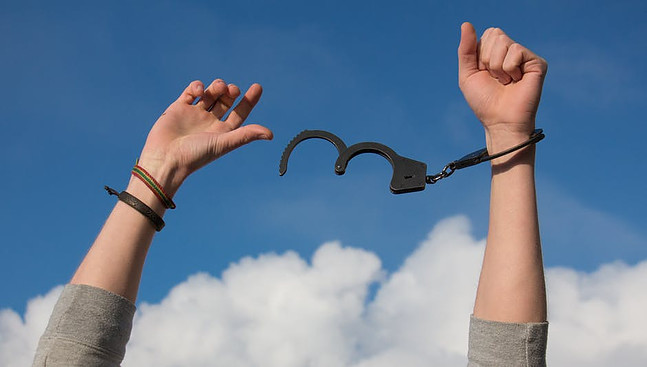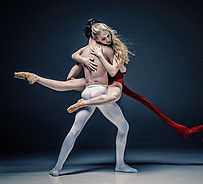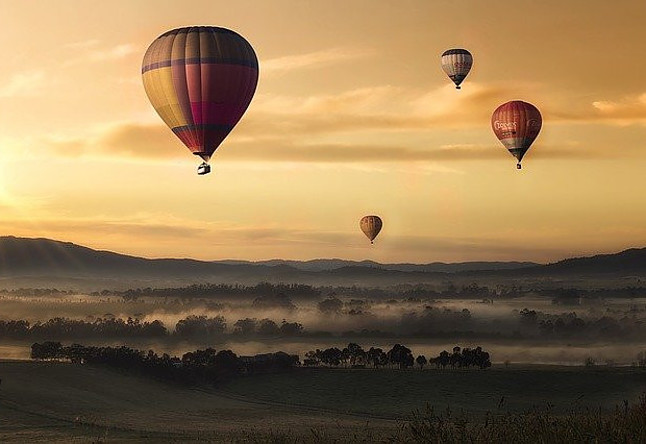This article will discuss freedom. A challenging topic because everyone has their own definition of freedom. This article will argue that there is a common source of freedom, accessible to all of us. While we may each have our own definition of freedom, we all the same capacity to tap into its common source. Hence, there is a freedom which is common to all of us.
Freedom in life begins with freedom in the mind. Since we all have a mind we can all tap the source of freedom. I will (briefly) discuss an activity which I practice daily to cultivate freedom.
Life with any cultivated plant, I will also talk about the fruits born by cultivating the plant of freedom.
So read on if this interests you.

Where Does Freedom Start?
“The freedom of the mind is the beginning of all other freedoms.”
That is a quote by Clinton Lee Scott, an American Universalist minister. It succinctly captures the essence of freedom; it establishes it as a quality which originates from within each of us. The quote is simultaneously daunting and liberating in scope. It’s daunting because by acknowledging the mind as the source of all freedom, it shows us that the responsibility for freedom lies with each of us. It’s liberating because this personal responsibility for freedom also means we have all the power we need to cultivate it.
We have the power to cultivate freedom of the mind. Thus, we have the power to cultivate all other freedoms. “All other freedoms” meaning just that; financial freedom, time freedom, health freedom and social freedom.
All of these forms of freedom find their common source in the freedom of our mind.
What do I mean by “freedom of the mind”? It’s actually a definite state of existence. Impossible to describe in words, but perfectly able to be experienced. I write this from personal experience. I can’t tell you what it’s like to live with a free mind, but I CAN tell you that it’s possible to do so and that everyone can do it.
First a bit of philosophy.
What Does It Mean To Have An Unfree Mind?
Life has been engaged in a dance since its very beginning, refer to the article “Nature And Success – Get Inspired!” for more. The “dance of life” takes place at the boundary between polarities. “Polarities” just means two opposing and complementary entities, like:
- Light and dark
- Day and night
- Movement and stillness
- Life and death
- Good and evil
- Abundance and scarcity
- Pleasure and pain
These are all examples of polarities. Neither of these entities can exist without its opposite; you cannot have light without dark, nor life without death, each is part of the other and denying one means denying the other. Imagine living in a universe which is just light; light is all there ever is, all the time, How would we know that light even existed, if all we ever experienced was light? We wouldn’t experience “light” because we would have no “dark” to compare it to.
In order to experience anything we need to also be aware of its opposite. To experience movement we have to be aware of stillness. To be happy, we need to experience misery. We need to know what it means to be down so we can appreciate what it means to be up!
As living beings we exist in a dance between polarities. This is an inescapable quality of our existence. It’s both wonderful and terrible. Wonderful because it’s this polarity which creates all the things which make life worth living; all of our emotions as well as all the variety of experience we have access to. It’s terrible because this also means we are subject to pain, loneliness, illness and death.
These experiences are part and parcel of being alive; denying them means denying life.
Having an unfree mind means allowing the polarities of life to dictate your inner experience.
I’ll explain a little more, with science.
The Dance We’ve Been Dancing For Billions Of Years

Yes, from the moment life began it has been dancing. While we still don’t know how life originated on the planet, we do know that right from the beginning life has had to respond to challenges in its environment in order for it to continue and propagate.
For example, in order for a single-celled bacterium to find the food it needs to survive, it first has to be aware of its need for food. It has to possess the biological circuitry to sense that it is hungry (scarcity) so that it can take action to acquire food and thus satisfy it’s hunger (abundance).
So, in order for the bacterium to find food it needs to be able to sense the world outside of it. If the bacterium can’t sense the world outside of it, it is unable to find food, even if that food is right next to it. Evolution has provided some bacteria with tiny “hairs” (cilia) which they can use to sense the world and tell apart food items from non-food items.
In order to effectively navigate the world, it would be helpful if the bacterium could move, so evolution has given some another set of “hairs” which allow them to propel themselves around the world, in search of food and other necessary things for life.
It’s the bacteria’s ability to perceive lack which allows it to take the action to live. It’s the perception of polarities which drive it to survive, a consequence of being alive.
Fast-forward a few billion years and you arrive at us, human beings. Life has come a looong way since it first originated on the planet, we are much more complex than the first bacteria. But make no mistake, the same principles that allowed the first bacteria to survive billions of years ago are still active within us.

We still exist in a dance between having and not having, between satiation and hunger, between pleasure and pain. In short, we experience craving and aversion. We crave pleasure and we are averse to pain. We exist in duality.
Now it’s time to get a little spiritual.
Craving Is The Source Of All Suffering
According to Buddhist philosophy, it’s our constant craving which is the source of all the suffering we experience.
When we experience a pleasurable sensation (eating delicious food, having a loving partner, working an awesome job) immediately crave more of it. We think about it, plan for it and act to get more of it.
On the other hand, when we experience a painful sensation (ravenous hunger, the rejection of a romantic partner, working a terrible job), we find ourselves craving it’s ending. We think about it ending, plan for it to end and act to end it or to avoid it in the first place.
In other words, we are constantly craving a change in our state of being. This craving is a consequence of our biological circuitry, which has evolved to guide us away from pain and towards pleasure. This craving circuitry does supremely well in keeping us alive. It’s an unimaginably powerful tool to get us to live and reproduce.
And it’s the source of suffering. Because it is the nature of everything to end. Nothing lasts for ever. Everything ends. And when the pleasure ends we crave more of it. And when the pain begins we crave it to end.
It’s this craving, this ceaseless grasping for something that isn’t here and now, for something that comes later and somewhere else, which is the source of all suffering. Until we become aware of it, it’s hidden from us. But just because it’s hidden doesn’t mean it doesn’t cause us suffering.
Suffering is an inescapable part of life.
Or is it?
“To Have A Free Mind” Means Escaping Suffering
Approximately 2,500 years ago a person came about who figured out that it’s this seemingly endless cycle of craving and aversion which is the source of all suffering. His name was Gautama Buddha.
Buddha traveled throughout Asia to learn from the enlightened masters of the time. He wanted to learn how to transcend suffering. He looked and looked, learning from one master and then another, discovering that each master had their own ideas about how to go about curing suffering, all of which failed to accomplish the goal.
It wasn’t until the Buddha resolved to transcend suffering through his own experience that he discovered both the source of suffering and its cure. The Buddha sat beneath a tree (the Bodhi tree) and through deep introspection he pierced through the polarized nature of the mind and discovered a realm of existence beyond the biologically-driven cycle of craving which keeps us caught up in our suffering.
He discovered freedom.
And after he discovered it he dedicated himself to teaching others how to do so for themselves. Not through performing ceremonies, repeating incantations, chanting mantras or doing rituals, but through the personal experience of freedom from suffering. Personal experience of liberation.
And fortunately for all of us alive today, the technique discovered and perfect by the Buddha for escaping the cycle of suffering has survived. I practice it every day, without fail.
It’s called meditation.
Why I Meditate
Over the past few decades, meditation has grown tremendously in popularity throughout the western world. The effects that meditation has on the brain and body (and hence our internal experience) are being rigorously studied by research labs all over the world (I will write an article about the science of meditation). Meditation, or Mindfulness Based Stress Reduction, is now being prescribed as a way for chronically ill patients to handle the pain caused by their maladies. Science has identified a plethora of health benefits stemming from meditation.
There are countless different techniques for meditation, but they all have one thing in common: the systematic training of the mind.
The world is waking up to both the ultimate power the mind has over our experience. As well as to the power we each have over our mind.
I meditate to experience freedom. Freedom from the cycle of craving I experienced from the time I was a child. Freedom from being constantly unsatisfied with the state of my life in the present moment. Freedom from the ceaseless desire to change the present moment for something else.
Because, as it turns out, there is a middle way; a path we can walk in between craving and aversion. Where we experience life fully, without judging it, without attaching to it, while allowing each moment to arise and pass away.
Because each moment in life is unique, and by training your mind to let go of craving, to not identify with it, you are able to appreciate the full uniqueness of each moment. Life becomes an open adventure.
This doesn’t mean that you give up pursuing what you want in life. It means you act from a place of freedom, rather than one of slavery. You experience the craving, and you choose how to respond to it. You don’t let the craving choose for you.
In this way, you are able to surrender expectations and work with full immersion in the needs of the moment, living to the fullest; appreciating the good, learning from the bad while accepting them both.

Nothing but the systematic training of your mind can accomplish this. It is priceless and it is ultimate. No one but you are responsible for your own freedom.
And it’s all within your power.
How To Start A Meditation Practice
Starting a meditation practice is as easy or as difficult as we make it. Like with any new habit it requires us to rearrange our lives and decide what we want to prioritize. Do we prioritize entertainment or freedom of the mind? It’s up to you.
If you want to succeed in establishing a meditation practice it’s important to start small, five to ten minutes a day, at most. The easier the habit, the more likely you are to perform it. The more you perform it the easier it becomes.
The following tips can help you install the habit so that it lasts:
- Start small (5-10 minutes at most)
- Meditate at the same time every day
- Meditate on an empty stomach
- Meditate in the same place every day
- Meditate indoors, in a quiet room, away from distractions
Despite what you may believe, meditation is simple. Here’s how to do it:
- Sit down, cross-legged, with your back straight (or however you are comfortable)
- Close your eyes
- Pay attention to your breath; how it feels when it enters your nose and how it feels when it exits your nose.
- Whenever your mind wanders, and it will, gently direct it back to your breath. Don’t judge yourself when you catch your mind wandering. Be happy! It means you were aware of when your mind wandered. It’s this awareness which meditation trains. Welcome it. Embrace it. This is training the mind.
And that’s it.
I hope this article is of use to you. Freedom truly begins in the mind. When you train your mind to be free you cultivate every other type of freedom in your life. Because everything begins in the mind.
I would love to know your opinion. I invite you to leave a comment below!
To your wealth and success.
Thank you yet another insightful post, Erick. Freedom is definitely in the mind! My wife recently gave birth to our 2nd child and she has mastered the art of freeing herself from pain using her mind (check out hypnobirthing); I had never realized it was possible for a woman to give birth entirely painfree if she is mentally willing and capable! This, I believe, really cascades into all facets of life. So many people are stuck in a cycle of societal expectations or mental limitation and don’t know how much freedom there is to be found if they decide to first unlock it mentally, then follow through with the attached life decisions!
Hello A Jaynes! Congratulations on becoming a fatherX2!
Hah! Your comment made my soul smile! It’s so great to know that there are people out there who are willing to make the choices to live freely!
I am actually aware that women are capable of not only freeing themselves from pain while giving birth, but even experiencing great pleasure while doing so. I will check out hypnobirthing. If you’re curious, you can also check out the work of Elena Tonetti-Vladimirova! She has taught thousands of women to let go of their trauma so they can bring new life into this world without difficulties.
We all have unlimited opportunities available to us. Because we can all always choose how we interpret reality. To some, obstacles are stop signs, while to others they are fuel for their creative energies.
All the best,
Erick